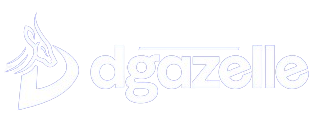For small businesses, every Naira counts. Marketing on a tight budget requires creativity and smart strategies to maximize your resources without sacrificing effectiveness. The great news? There are several low-cost strategies that can help you reach your target audience and increase engagement without breaking the bank.
As Nigerian SMEs, we understand that both time and money are limited resources. That’s why we’ve put together a list of practical, budget-friendly tactics that are not only easy to implement but also incredibly impactful.
Whether you’re just starting your business or looking to refresh your marketing approach, these strategies will help you make the most of your marketing spend and grow your business—no matter the size of your budget.
In fact, The CMO Survey revealed that 42% of Chief Marketing Officers (CMOs) are dealing with marketing budget cuts. But despite these challenges, businesses are still finding ways to adapt and thrive with cost-effective solutions.
This article dives into the most effective strategies for Nigerian business owners who are navigating budget constraints, helping you make every Naira you spend work harder for your business.
Marketing budget and Clear Marketing Goals
When you’re facing a marketing budget crunch, setting clear goals and priorities becomes a game-changer. It’s about making every Naira work harder for you. Rather than spreading your resources thin across various activities, you need to laser-focus on what truly matters to drive growth and success. So, how can you set the right marketing goals for your business? Here’s a step-by-step guide:
- Review Business Goals: Focus on marketing activities that drive your business forward.
- Rethink Your Target Audience: Analyze existing customers’ behaviors and pinpoint the ideal audience.
- Clarify Customer Actions: Make sure your offers are crystal clear, guiding customers toward desired actions.
- Optimize Your Funnel: Continuously refine each stage of your funnel, from awareness to conversion.
Focusing on high-impact, low-cost activities is key to achieving maximum results. At Dgazelle, we help businesses refine goals, target the right audience, and streamline processes to make the most of limited marketing budgets. Reach out today to start optimizing your strategy!
1. Leverage Social Media Platforms
Social media is a powerful, low-cost marketing tool that allows you to reach a wide audience. Platforms like Instagram, Facebook, Twitter, and LinkedIn offer free accounts for businesses to build their presence and engage with their audience. By consistently posting valuable content, responding to customer inquiries, and using hashtags effectively, you can gain traction without spending a penny. You can also join relevant groups or communities to increase visibility and engage with your target audience directly.
2. Create Valuable Content
Creating valuable content is a powerful way to attract new customers and position your business as an authority in your industry. Whether it’s blog posts, e-books, whitepapers, or videos, providing useful and relevant information will keep your audience engaged. The best part? It’s cost-effective and builds long-term value. By consistently sharing this content on your social media platforms and website, you increase visibility and drive organic traffic.
To make the most of your content, balance between gated (premium) and non-gated (free) content. Gated content allows you to capture leads, while non-gated content nurtures broader engagement and establishes trust.
Whatever approach you chose to use, ensure to optimize your content for SEO with simple practices like using keywords, internal linking, and creating shareable content. Or better still outsource it to dedicated marketing agency like Dgazelle
3. Email Marketing
Email marketing remains one of the most powerful tools for small businesses on a tight budget. By building an email list and sending regular, valuable content to your subscribers, you can nurture relationships and drive repeat business. Platforms like Mailchimp offer free plans for small lists, which means you can get started without any upfront cost.
Use segmentation to send personalized, targeted messages to different parts of your audience to increase open and click-through rates.
4. Collaborate with Influencers (Micro-Influencers)
While working with big influencers might be out of reach, micro-influencers (those with smaller, highly engaged followings) often offer affordable or even free collaboration opportunities. Micro-influencers are typically open to partnerships in exchange for free products, services, or exposure. This tactic can help you tap into a new audience and build credibility at little to no cost.
Remember to choose influencers whose followers match your target demographic to maximize the effectiveness of your campaigns.
5. Offer Discounts and Promotions
Offering discounts and promotions is a highly effective way to attract new customers while encouraging repeat business. Whether it’s a special discount for first-time buyers or a loyalty program for returning customers, these offers can motivate potential customers to take action and increase retention.
Promotions are also a great way to generate urgency and boost sales, especially if you time them with holidays or special events. Loyalty programs, on the other hand, help build long-term relationships with customers, fostering brand loyalty and increasing the lifetime value of each client.
At [Dgazelle Digital], we understand how impactful these strategies can be, and we can help you design the perfect promotions and loyalty programs that align with your business goals. By offering the right incentives, you not only attract new customers but also ensure they keep coming back, all while working within your budget to maximize returns.
6. Referral Programs
A referral program can be an incredibly cost-effective way to increase your customer base. By offering existing customers incentives (such as discounts or freebies) for referring others, you can generate new leads with minimal investment. Word-of-mouth marketing remains a powerful tool, especially when customers are motivated by rewards. Ensure to keep the process simple and the reward is attractive enough for customers to want to participate.
7. Networking and Partnerships
Networking and building partnerships with other small businesses or professionals in your industry can open doors to valuable marketing opportunities. Attend local events, participate in online forums, and collaborate with businesses that complement your products or services. By sharing each other’s audiences, you can expand your reach without spending any money. You can use LinkedIn to connect with potential business partners and influencers in your industry.
Conclusion
Marketing on a tight budget doesn’t mean you have to compromise on quality or effectiveness. By leveraging these strategies, small businesses can make the most of their limited resources and still drive significant growth. Whether it’s through organic social media marketing, content creation, or collaborating with influencers, there are numerous ways to stretch your marketing funds and achieve lasting success.
We understand the unique challenges small businesses face when it comes to digital marketing. Our expert team specializes in helping businesses grow their online presence without breaking the bank.
If you’re looking to get the most out of your marketing budget, contact us today to learn how we can help you create a tailored digital marketing strategy for success!







